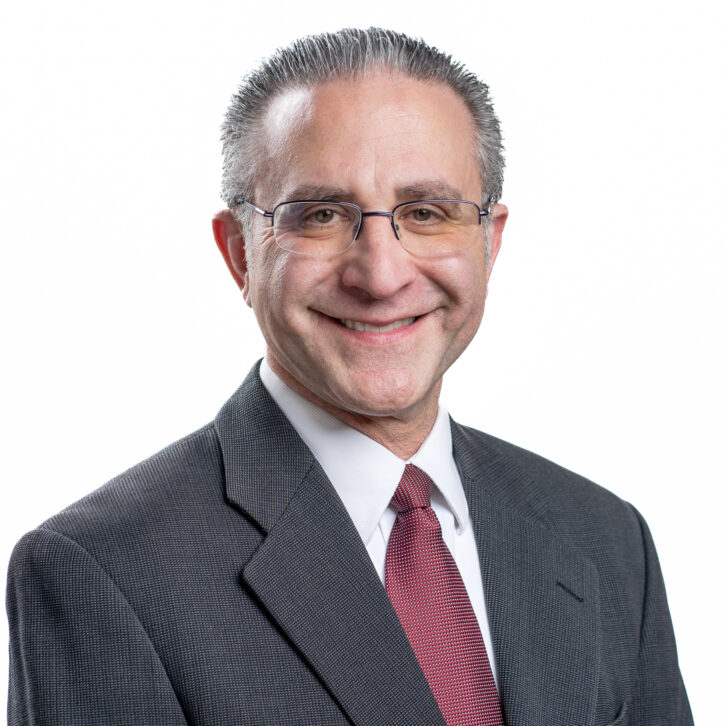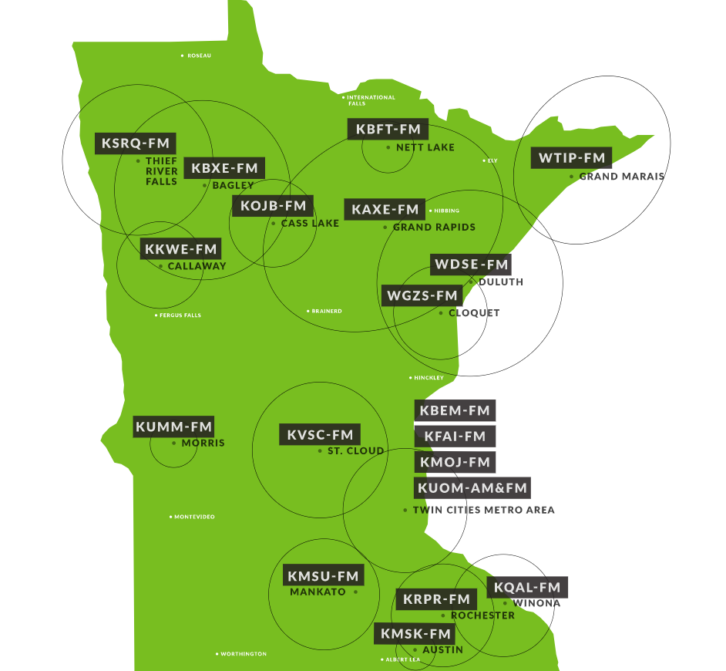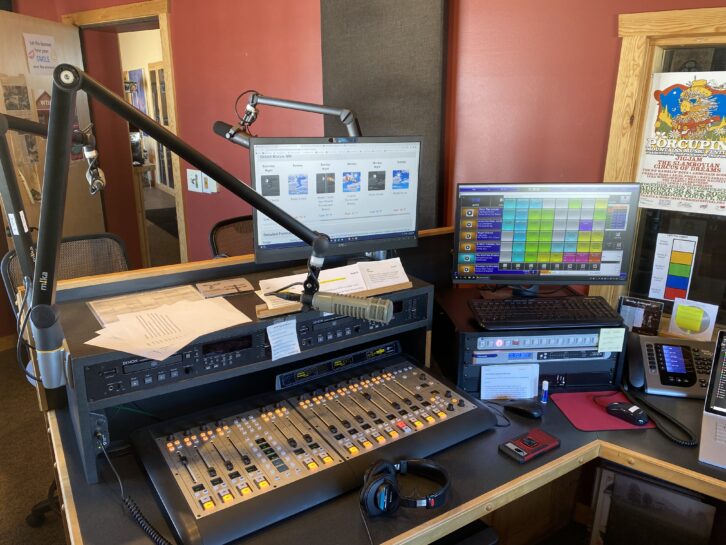Ampers is on the move. The Minnesota-based collection of 18 independent community stations is working to expand its services.
The Association of Minnesota Public Educational Radio Stations is a nonprofit support organization whose member stations focus largely on small and underserved communities. These full-power, non-commercial outlets, mostly FMs, include music formats from classic rock deep tracks to jazz and blues, along with cultural programming aimed at people across the North Star State.
Four of its stations are licensed to Native American communities. One member station has programming in 10 languages; another is the only station in the state with a mission to serve communities of color. Additional areas of focus include the needs of Minnesota’s rural residents and its new immigrants.
50 years and counting
Ampers is the largest association of its kind in the country and represents most of the public stations in the state that are not affiliated with Minnesota Public Radio.

“Stations are often run by volunteers and programmed by and for their specific community,” it states. In some areas these stations are the only local source for news, information and emergency alerts and information about forest fires, storms, road closures and evacuations.
The organization, with a staff of four full-time employees, announced two notable personnel moves recently, adding Hlee Lee-Kron as its vice president of programming and promoting Justus Sanchez to production director. They oversee a team of about 25 contract producers who create content.
Ampers was founded in 1972 as a not-for-profit organization with seven member stations. It is not affiliated with MPR nor does it receive financial support from it.
CEO Joel Glaser says Ampers was founded on a simple philosophy. “These community radio stations decided to incorporate and come together for the purpose to gain state support as a single entity instead of individual radio stations competing against each other for funding,” Glaser said, “and to help member stations better serve their communities.”
Where MPR might be compared to a big box store in that it serves large numbers of people around the state, Glaser said, “our stations are the corner drug stores and the corner hardware stores where everyone knows your name.”
Growing resources
Glaser, who joined Ampers in 2009, has three decades of broadcast experience including six years in advertising sales management with Hubbard Radio. He said obtaining state money for stations is just one of the pivotal roles Ampers fills.
“Helping them generate funding is obviously huge, but we also provide programming and staff training for members. We advocate for them. We lobby for them. We help them with legal issues and guide them with crisis management. Whatever it is our members need, we try to help with.”

Radio stations pay an annual fee, which helps fund the organization, but the stations “make back far more than they pay in yearly dues,” Glaser said. “It’s indeed well over ten-fold what members make back in grants, state funds and underwriting that we secure and share with the stations.”
Ampers is not just a radio network, Glaser says, but an association of stations, which means clients that provide underwriting can select which stations they want to be heard on. The group’s tagline is “diverse radio for Minnesota communities.”
Funding comes from private donors, corporations, foundations and government agencies, he said, which is then disbursed to member stations.
Those resources have grown considerably. Fourteen years ago its annual revenue was around $300,000. In fiscal 2021 Ampers reported $1.7 million in total revenue. Membership dues accounted for approximately $100,000 of that.
Minnesota state appropriations to Ampers and its members in the fiscal years 2022 and ’23 totaled around $5.4 million. That was set to increase to $10.2 million for 2024 and ’25 in a bill the governor was expected to sign in late May. The increase of about $4.8 million is due to several initiatives including the launch of a diverse community radio news service.
Some of the organization’s affiliate stations also receive federal dollars from the Corporation for Public Broadcasting. Ampers includes a student-run station, KUMM(FM) in Morris, Minn., which is the only member that does not receive state funding because it doesn’t meet certain requirements.
Content creation
“At a time when other broadcast companies around the state and country are struggling and making cuts,” Glaser said, “our past two years have been two of our strongest years ever. That’s due in part because the Department of Health has recognized the importance of using our stations to reach the diverse underserved communities not reached through traditional media for the COVID outreach. And because of the racial awakening we’ve seen in our country but especially here in Minnesota.”
The organization also benefitted from the creation in 2008 of the Clean Water Land and Legacy Amendment to the Minnesota state constitution, which increased the state sales tax by three-eighths of 1 percent. Those monies are designated for clean water projects, recreation and legacy projects, defined in the amendment as “art, culture and history,” which includes libraries, museums and public broadcasting.
“That was a substantial move forward for Ampers, as long as the content created by us with those funds is artistic and cultural about Minnesota and supplement regular programming and operations with new initiatives. We have used Legacy funding to create things like ‘Minnesota Native News,’ ‘Minnesota Music Notes’ and ‘MN90: Minnesota History in 90 Seconds.’ Some of that programming is customized to local markets.”
The pending state funding for fiscal 2024 and ’25 mentioned above would include $4.1 million from the Legacy Fund.
“The programming we provide creates community conversations about things that really connect. We often find everyday people for storytelling about their own personal experiences. This initiative has grown into a lot of different health topics to create 90-second vignettes that air on the Ampers stations,” Glaser said.
Glaser points to the success of heart health and diabetes prevention and education campaigns that focus on peer-to-peer messages.
The organization also received approximately $700,000 from the Minnesota Department of Health during the pandemic for educational outreach to diverse communities, according to financial filings.
Ampers has been recognized for its cultural programming, including its podcast series “Racial Reckoning: The Arc of Justice,” produced with KMOJ(FM) in Minneapolis. The news podcast was aimed at “changing problematic racial narratives in mainstream news and helping the local community form educated opinions,” according to its website.
Last month, another Ampers station, WTIP(FM) in Grand Marais, won the prestigious Edward R. Murrow Award from the Radio Television Digital News Association in the “Excellence in Diversity, Equity and Inclusion” category for the series “It Happens Here: The Roots of Racial Inequity on the North Shore,” produced by Staci Drouillard.

Especially well received has been “Veterans’ Voices,” a radio series produced by Ampers that explores the knowledge, experience and leadership of Minnesota service members. It too was created with the help of the Legacy Fund resources.
Glaser also sought a special one-time appropriation from the state for fiscal 2024 for emergency equipment, cybersecurity tools and broadcast technology for its members; as of late May that was pending final approval. The money would be used for items like backup transmitters and generators, new automation systems and tech upgrades for remote operation. He added that several of its stations were hit by ransomware attacks in 2022.
Ampers does not have production facilities because its team of producers and journalists work remote, Glaser said. They work collaboratively utilizing Box.com to host audio and edit files.
There’s room for Ampers to grow, Glaser said, including the possibility of adding more Native American stations. “There are several large southern Minnesota tribes and we have discussed helping them find a signal. There are limited opportunities for that, obviously, but they would be a natural fit for Ampers affiliation.”
To stream any of the Ampers stations and learn more about the organization visit www.ampers.org.
Ampers Audio Transport

Ampers uses several tools to deliver programming to its member stations, including an FTP site where audio is loaded and then extracted by tools like DJB Radio Spider and ingested into on-air automation systems.
According to Justus Sanchez, production director for Ampers, the stations also have direct download access to programming from Box.com and PRX Exchange. “Our programs also appear in podcast feeds through Transistor and our website Ampers.org through an API that ports them directly from PRX Exchange.”
The contract producers and journalists use Adobe Audition, Hindenburg, Apple Logic Pro and Pro Tools to edit audio and programs. “We utilize Box.com to host all of our audio and edit files. For us it integrates and syncs well from user to user,” he said.
The organization teams with their stations to originate live broadcasts from the Minnesota State Fair each summer using an Axia iQ digital console “that really simplifies the remote setup,” Sanchez said.
Ampers also uses Shure SM7B mics when recording programs in community, he said, which are paired with Zoom PodTrak P8 or Behringer X18 mixer when recording content to be broadcast later.







